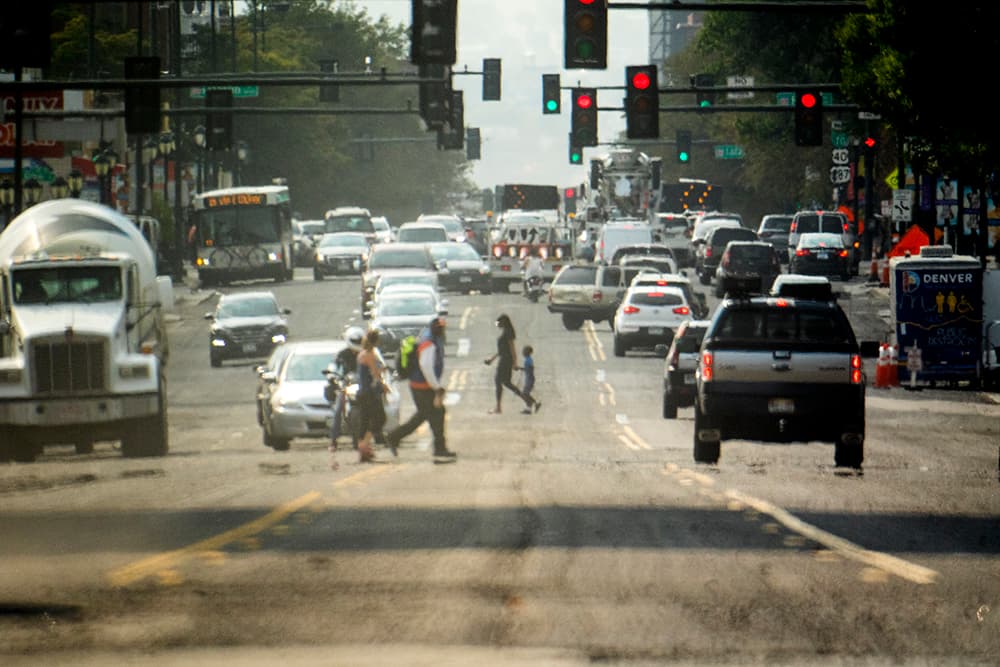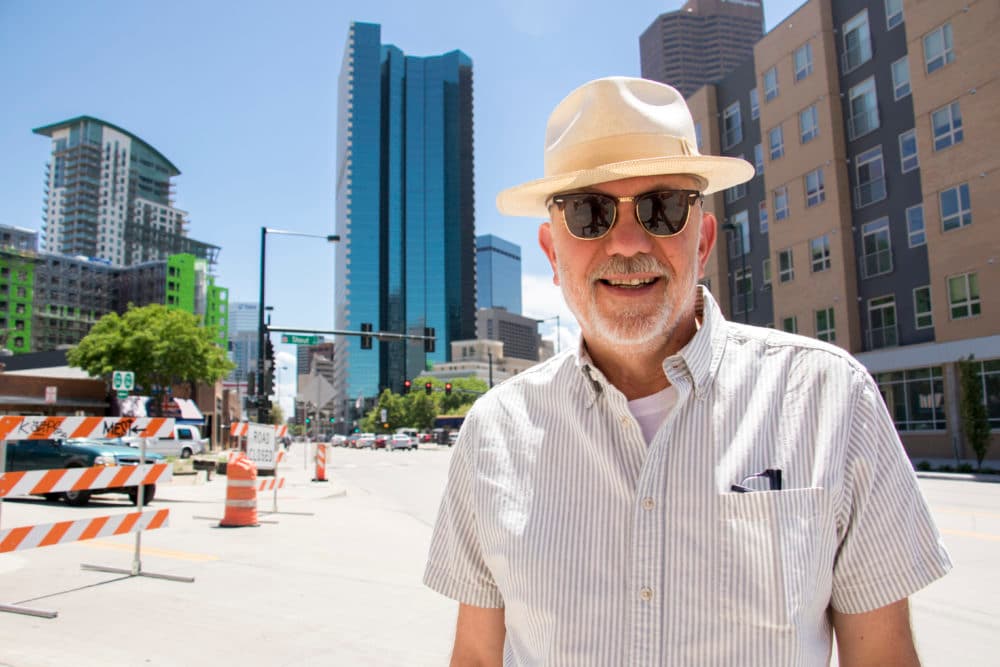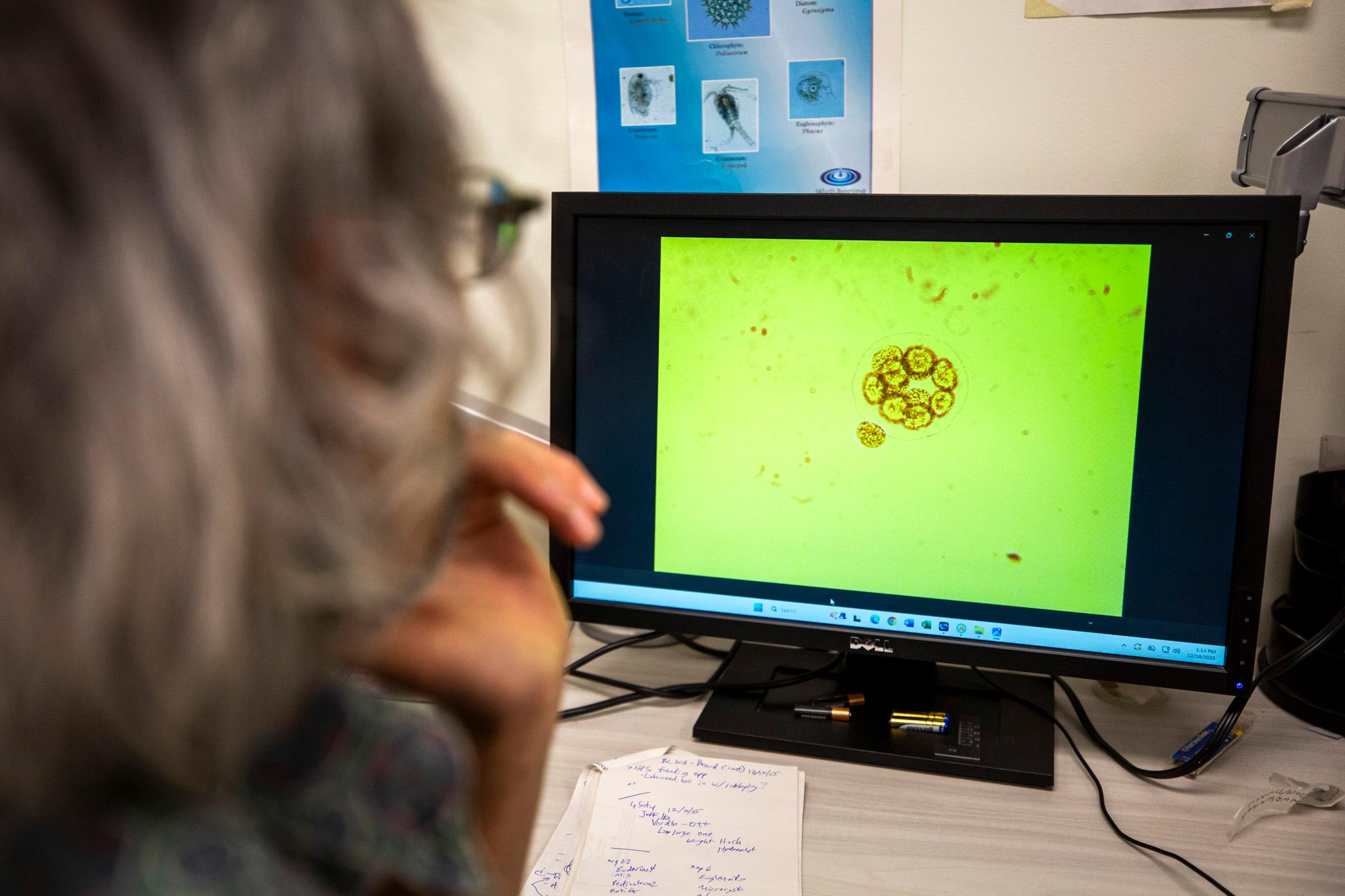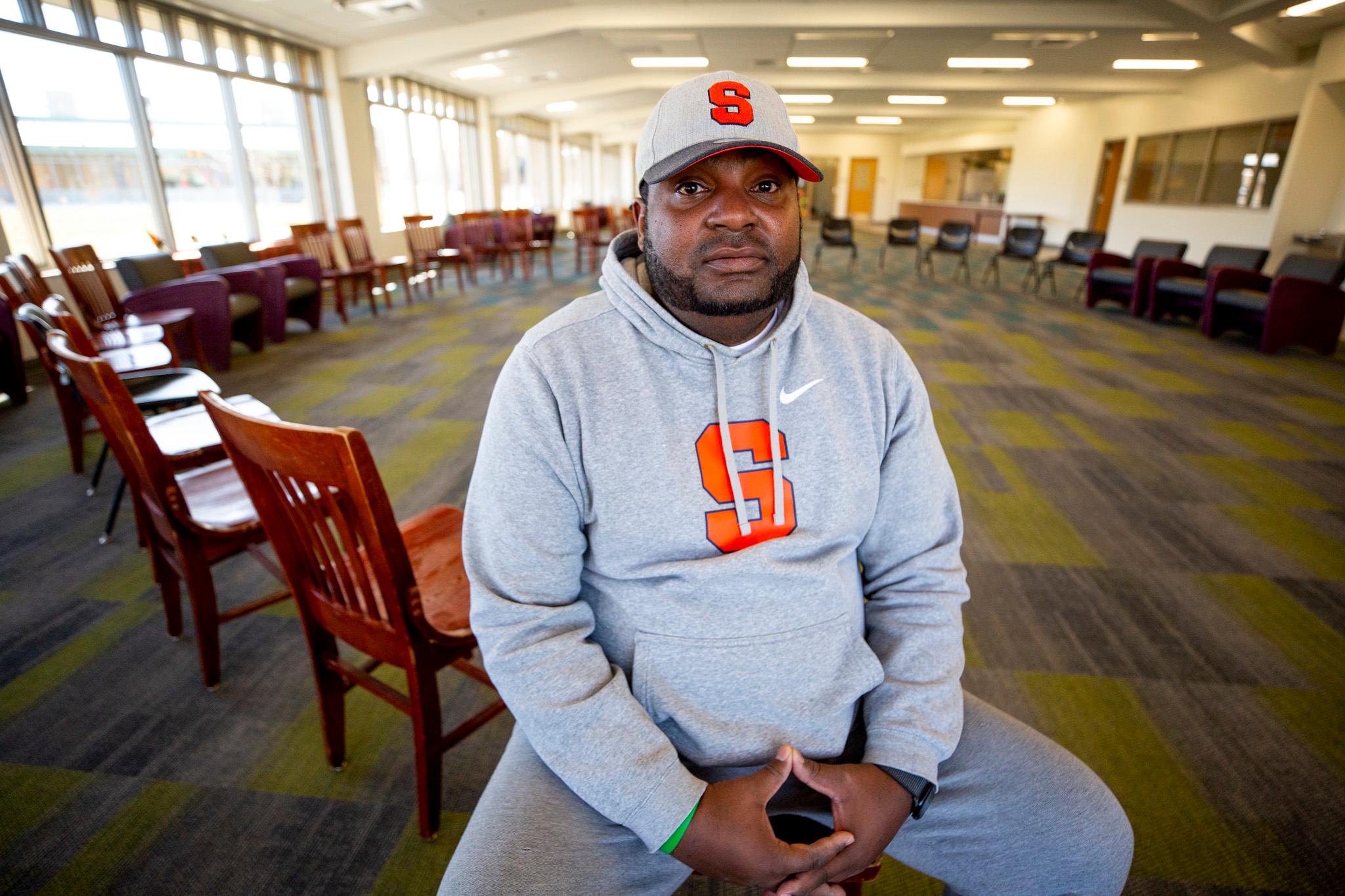
Denverite member Thomas Lucas asked, "How can Denver become more pedestrian friendly? It seems the city talks a good game on this but it doesn't yet walk the walk. Pun intended."
It turns out that kind of civic transformation can take a lot. It's as much an issue of reshaping our ideas about what a city should be as it is a physical challenge.
What Denver needs and where:
Denver District 6 Councilman Paul Kashmann said the first thing he would tackle to improve walkability in his district (which encompasses DU and Virginia Village south of Glendale) would be sidewalks.
"We have," he said, "I don't know how many miles of those narrow Hollywood sidewalks that are 28 to 32 inches wide. You need 36 for a wheelchair."
It's not just an issue of accessibility -- what Kashmann called "basic human rights" -- but also a consideration for the health of his constituents and "a pure amenity." He should know. The councilman became the head of Denver's sidewalks working group after he was approached by WalkDenver, the pedestrian advocate group.
Narrow and missing sidewalks have long been an issue in Denver. There's Elyria-Swansea, whose community advocacy around an extreme lack of infrastructure earned them a special earmark of an $18 million sidewalk fund. Councilwoman Kendra Black's push to improve her south Denver district inevitably broached walkability as it relates to attracting new residents. And last year, a study concluded obese children are more likely to live in areas with substandard sidewalks.
"We've made a lot of progress in the last years," said Jill Locantore, who recently took over as executive director of WalkDenver. But, she said, "We still have a long way to go."

Sidewalks. Easy ... right?
As far as neighborhood infrastructure goes, Kashmann said, "Widening our sidewalks to a standard 4-foot width is probably the most complicated chore we have ahead of us."
Every stretch where Denver might try to widen or add sidewalks requires working with every single property owner along the way, not to mention the material costs and labor.
"It will be very expensive and time consuming and will need to be done with great consideration to property owners," Kashmann said.
Locantore agreed that sidewalk renovations would be her top-priority fix, but said that, ultimately, we're in need of a citywide change in mindset as it pertains to infrastructure.
The west, Locantore said, was shaped by the automobile's takeover of American society.
Unlike cities in the east that have funded sidewalk maintenance since horses were a dominant form of transportation. Urban centers on the new frontier largely pushed that responsibility on property owners.
Cars were taking over society and the mindset, said Locantore, was: "We're never going to walk again!"
As Denver and the West grew more metropolitan, our ideas about auto-centric cities became concrete (pun intended for you, Thomas) in the surrounding landscape. Today, Locantore said, we're grappling with outmoded ideas that require bulldozers to erase.
As a result, we don't conceptualize sidewalks as basic infrastructure like electric or sewage lines. That's why change in this regard is hard, she said, not to mention that "government has struggled to maintain all kinds of infrastructure."
Chris Jones, a local YouTuber with a penchant for urban design, said he worries that those outdated ideas surrounding us in concrete have had dire effects.
"I think we live in the most isolated culture in the history of humanity and I think the driver of that is cars," he said (pun not intended). "We start to compare ourselves to people on TV instead of our neighbors because we don't see our neighbors."
Health and mental issues, a divided country, he feels, are all part of this bigger picture.

"The best first step," Jones thinks, "is fixing the worst areas."
Places with the most pedestrian accidents or where Denverites fear walking most should be addressed first. He said proposed changes to Colfax, which could make part of the wicked drag a one-lane road with space for public transportation, are a good example of how the city is moving on this.
Walkability is a sprawling problem, Jones said, and fixing the city will take "incremental changes."
Whether that turn of the screw is in new sidewalks or improvements of dangerous areas, he said, it's all in service of slowly changing our attitudes about infrastructure, safety and accessibility. The more we shift that concrete consciousness all around us, the easier we'll make moves toward the future.
David Sachs, who runs Streetsblog Denver, agreed that any small changes we make today will send ripples into the future.
"These are a means to an end, and the end is a better working city for everyone, in terms of quality of life," he said. "It's not just walking for walking's sake."
Sachs said his number-one fix would be something called a "road diet," in which wider streets become narrowed to help slow traffic and decrease crossing distances. A good example of this, he said, is the recent conversion of 19th and 20th Avenues in North Capitol Hill from multi-lane, one-way streets to two lanes of traffic going both ways and flanked by bike paths.
"It's inexpensive. We're talking about paint and signage." The changes uptown have allowed nearby residents better, safer access their neighborhood, he said, "It's like night and day."
The city is looking at walkability as it looks ahead, too.
It's a major piece of a potential amendment to its Downtown Area Plan, which lays out guidelines for the development of a diverse, walkable, distinct, green and prosperous neighborhood over the next 20 years.
In addition to wide, safe sidewalks, it prioritizes lower speed limits, safe crosswalks and protected bike lanes. It also focuses on making the streets the kinds of places people want to walk and building the kind of mixed-use neighborhood where it's easy to walk from home, to work, to the store, etc.
"When a place is walkable, a lot of things are going right," Steve Nalley, a neighborhood planning supervisor, told Denverite earlier this month. "It's not just the street network, the sidewalks. It's land use. Something to walk to, walk from. Your walk is interesting. You feel comfortable walking."
If the guidelines implemented by the amendment are successful, we could see them replicated elsewhere in Denver.
Clearly, these are issues that non-experts are concerned about.
Thomas Lucas, who asked the initial question, lives in Curtis Park and works on Broadway as a Program Manager for the Colorado Coalition For the Homeless.
"I walk a lot. Anything within 2 miles is walking distance," he said.

The corner of Broadway and Champa Street near his office can be pretty hectic, he said. With cars "whipping around the corner," it's a long way to cross the street if you're older or, like many of his clients, disabled.
"The city is making steps in the right direction," he said, but he's ready to see more transformation take place.
Here are some ways you can get involved if you're like Lucas and think about this kind of thing:
Attend your local registered neighborhood association meeting. Topics of discussion often touch on infrastructure. Active neighborhood groups have been successful in getting the attention of city officials -- there's power in numbers. Next week, for example, Capitol Hill United Neighbors will be discussing safety concerns along 13th Avenue.
You can keep tabs on WalkDenver's latest pedestrian campaign. They're focusing on Federal Boulevard next and asking Denverites to send messages to the mayor's office. If direct action isn't your thing, you can also help by submitting information from your neighborhood to help them fill out WalkScope, their dataset and map of Denver's pedestrian needs.
We've been piloting a new feature here at Denverite that allows readers to submit their curiosities about neighborhoods and living in Denver -- and then vote on which we should tackle next. The process so far has been tested with members, but now we're ready for everyone to take a spin:
If you also want sneak peeks on various Denverite stuff (and access to our fun member gatherings), you can become a member at denverite.com/membership. We'd love to have you.











